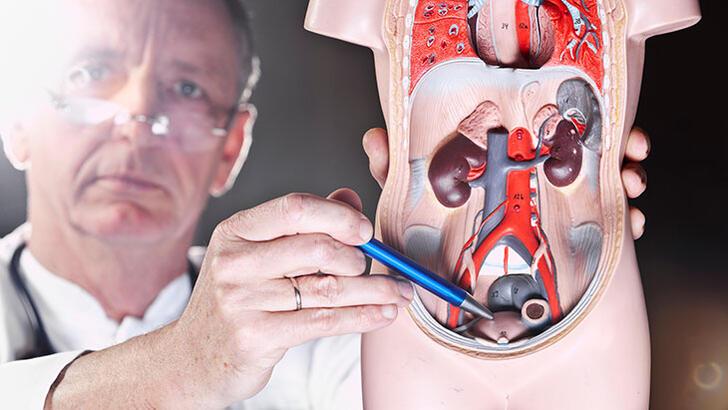Benign Prostate Hyperplasia Treatment
The prostate is a gland that looks like a chestnut on the urethra of male individuals. The older men get, the bigger the prostate becomes, and it may block the urinary tract. This causes the symptoms of prostate hyperplasia. Common diseases seen in the prostate are prostatitis, prostate hyperplasia (benign prostate hyperplasia/BPH) and prostate cancer. For prostate hyperplasia that is regarded as benign after prostate examination, blood tests and prostate needle biopsy are conducted when needed, and monitoring of the patient or treatment through medication or surgery is decided depending on the severity of the symptoms. A digital exam, serum PSA analysis, urinary ultrasonography, uroflowmetry, prostate biopsy and cystoscopy may be utilized in testing and diagnosis.
BPH symptoms are divided into two as obstructive and irritative ones. Obstructive symptoms are remission, intermittent urination, split-stream urination, incomplete voiding and difficulty during urinating, while irritative symptoms are the immediate need to urinate, polyuria and nocturia. These symptoms can be seen at any stage. The bladder and kidneys are affected in cases where the patient is not treated. Stones, diverticulitis in the bladder, dilatation, urinary tract infections and acute pyelonephritis may develop.
Treatment Options for Benign Prostate Hyperplasia
Monitoring
In cases where the symptoms of prostate hyperplasia are mild, it is a good option for patients who would like to wait until the symptoms are more noticeable. Protective measures can be taken. These can be regulating eating habits, lowering the amount of alcohol consumed, preventing constipation, regular sexual activity, avoiding sitting for long periods and lowering the amount of water drunk before going to sleep.
Medication
Medication for this health problem would include medications that relax the urethra or the bladder neck, those that slow down prostate hyperplasia and blood build-up through hormonal blocking and herbal medications with these effects. In the treatment, alpha-blocker medications and 5-alpha-reductase inhibitors that reduce the size of the prostate by preventing the transformation of testosterone into dihydrotestosterone are used. Alpha blockers reduce the flow resistance by preventing the contraction of smooth muscles cells in the prostate stroma and the bladder neck. The side effects of these medications depend on the dosage and are hypotension, dizziness, fatigue, retrograde ejaculation, rhinitis and headache. These side effects are reduced with alpha-1a receptor-specific medications. Medications produced from herbal extracts in the method called phytotherapy are also used for BPH. The effect mechanisms of these phytotherapeutic agents are not completely known, and their credibility and effectiveness have not been tested through multicenter, randomized, double-blind, placebo-controlled studies.
Surgical Treatment
Surgical treatment is applied in cases where the symptoms of prostate hyperplasia are severe, medical treatment is not sufficient, blood is detected in the urine, the urinary tract is inflamed (cystitis, prostatitis), there is a stone in the kidney, urine flow stops completely (where a catheter is needed), and renal failure occurs. Surgical options include transurethral prostate resection (TUR-P) that is performed laparoscopically using bipolar energy, plasmakinetic energy or monopolar energy, open prostatectomy for patients with an excessively enlarged prostate (over 100-150 grams), transurethral incision of the prostate that is performed with the help of electrocautery for patients with mild to moderate symptoms, and laser prostatectomy.
We recommend our patients to visit their doctors for periodical PSA tests and urology checkups in order to not miss an underlying prostate cancer after the age of 50 (after the age of 40 if you have any relatives diagnosed with prostate cancer). With the development of technology in our day, BPH and prostate cancer can be treated swiftly.

Working Hours
- Mon-Thu 08:00 - 20:00
Friday 07:00 - 22:00
Saturday 08:00 - 18:00
Contact Info
- +90 (850) 303 8 303
- info@alarahealthgroup.com







